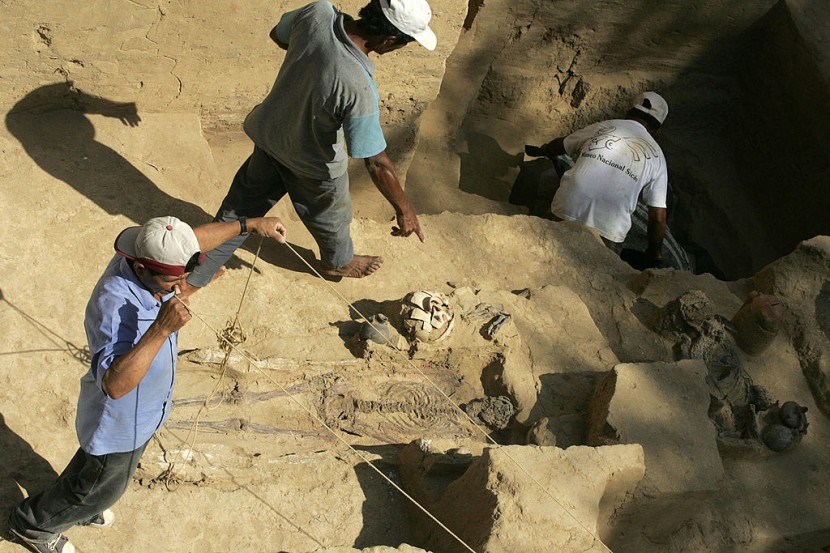
Archaeologists have discovered traces of human blood used in the red paint that people used 1,000 years ago to decorate a gold mask that was left with the remains of an elite man found in Peru.
The recent discovery found that the man, who was between the ages of 40 to 50 years when he died, lived during the Sican from 750 A.D. to 1375. The era was famous for its wide array of dazzling gold objects; the majority of which were buried inside tombs of the elite class.
Human Blood in Red Paint
Experts first discovered the tomb in the 1990s, and archaeologists at the site at the time concluded the red paint cinnabar, which was a brick-red form of mercury, but they noted that the effective organic binder was still unknown until now, Dailymail reported.
The founder of the Sican Archaeological Project, Izumi Shimada, led the team that discovered the traces of human blood. The expert reassessed the ancient burial mask and discovered that the unique peptides were a match for human blood and bird egg proteins.
"The presence of human blood would support previous ideas that red cinnabar paint may represent 'life force' intended to support 'rebirth'," said the team in the study published in the Journal of Proteome Research.
The gold mask covered the face of the elite man's detached skull for the last millennia. A small sample of the red paint was taken from the mask. Experts used Fourier transform-infrared spectroscopy to reveal that the paint actually contained proteins. This led the team to conclude a proteomic analysis using tandem mass spectrometry, Science Daily reported.
The team discovered six proteins from human blood in the red paint, including serum albumin and immunoglobulin G, which is a type of human serum antibody. Other proteins that were found in the paint include ovalbumin, which comes from egg whites. Due to the deterioration of the proteins, researchers were unable to identify the exact species of bird's egg that was used to make the red paint.
The Sican Culture
The successful discovery of human blood proteins in the red paint used on the mask supports experts' hypothesis that the people of the time placed the remains of their brethren as a "rebirth" ritual of some kind. The blood-containing paint that coated the skeleton and face mask were believed to have symbolized life energy, Eurekalert reported.
The skeletal remains of two young women were also found arranged nearby in birthing and midwifing poses. Archaeologists also discovered two crouching children's skeletons that were placed at a higher level.
The Sican culture to which the remains belonged to inhabited the north coast of modern-day Peru. The people of the time predate the Incas, but the method of how they developed remains unclear.
On the other hand, some experts believe Sicans are the descendants of the Moche culture that developed in the country between 100 A.D. to 700 A.D. The culture was known to have put a large focus on funerary practices of its elite class, often burying them with dazzling grave goods.
Related Article:








